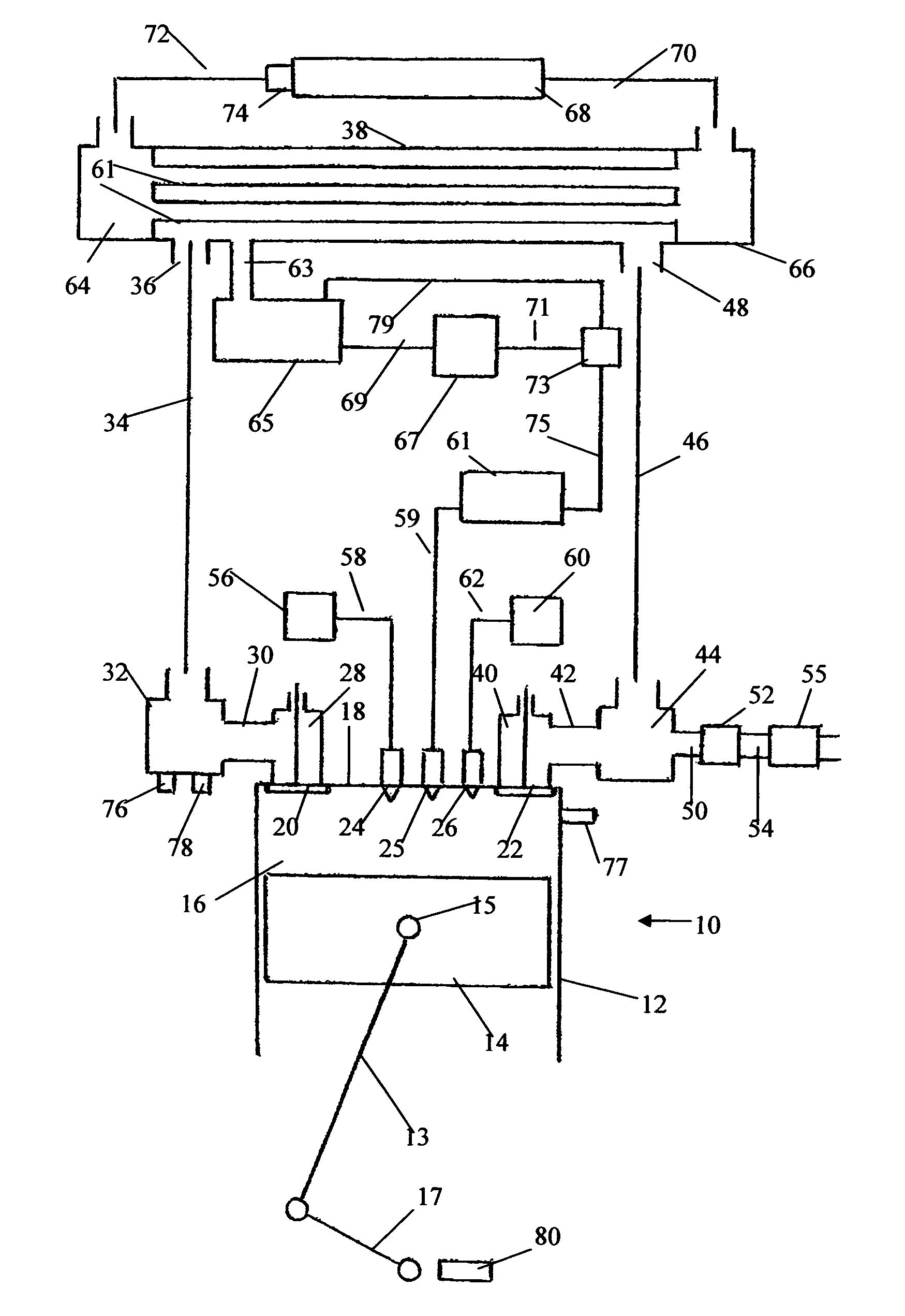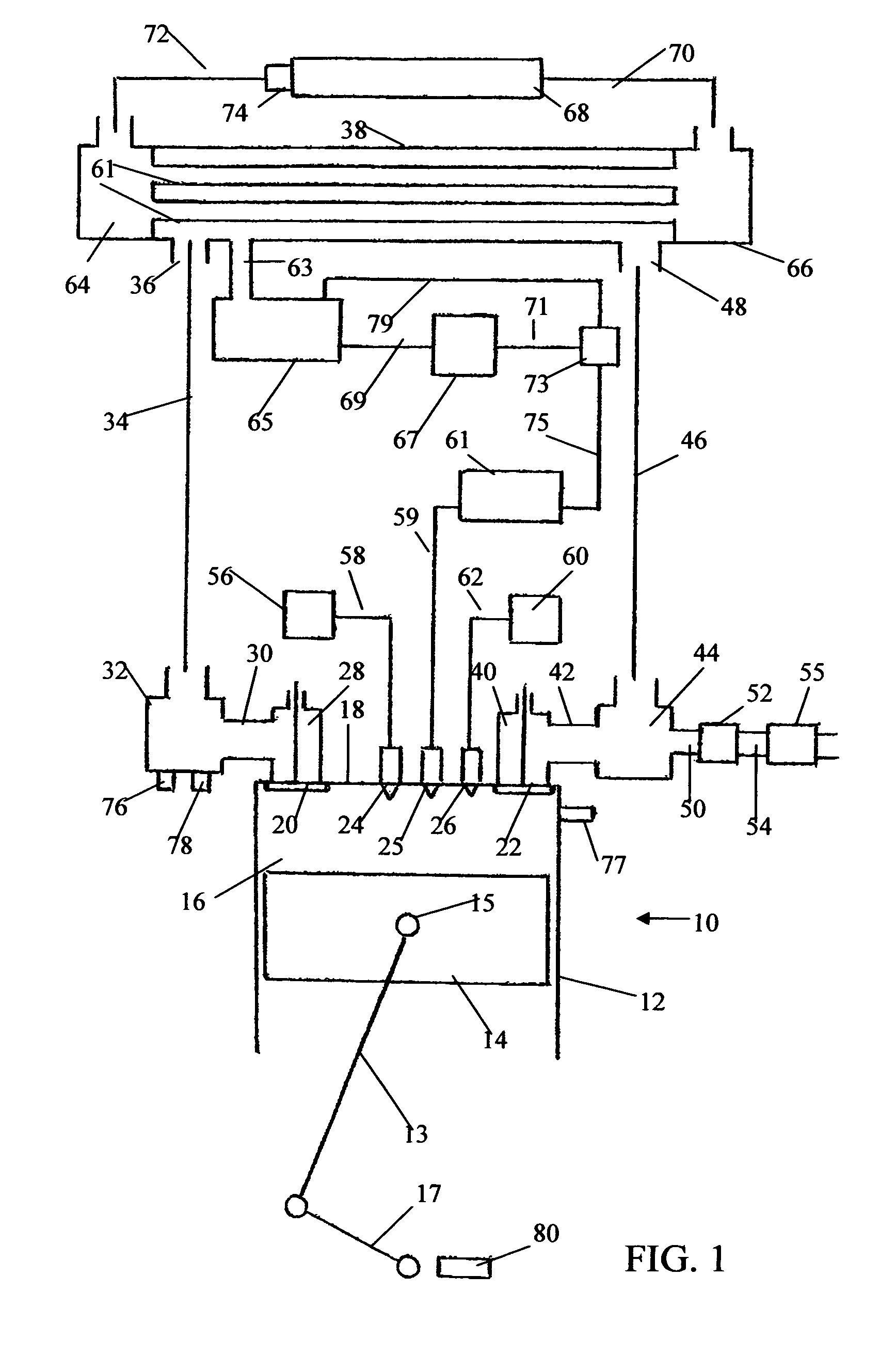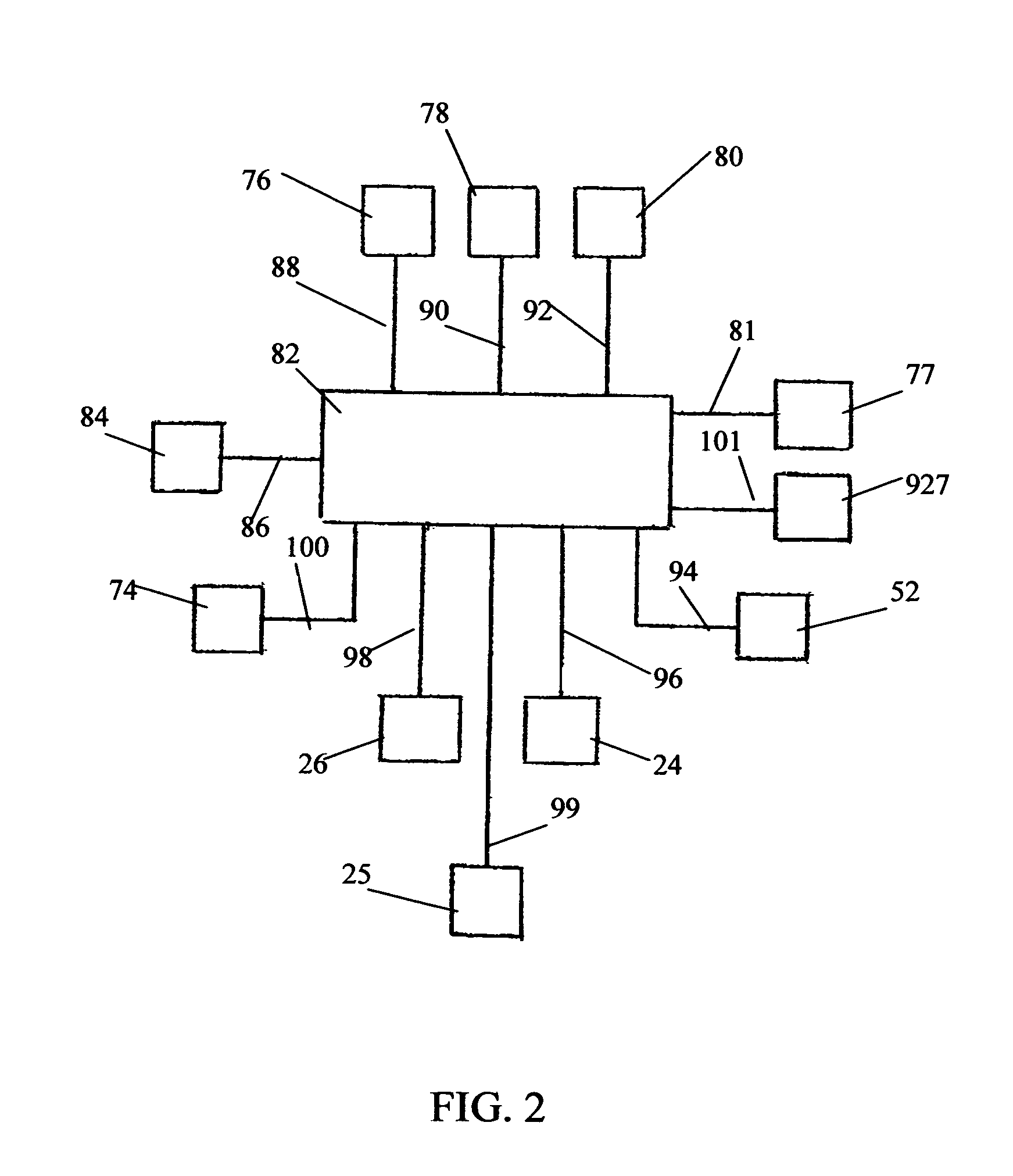[0035]One object of the present invention is to achieve a complete elimination of nitrogen oxides emissions from internal-combustion engines. This is achieved by eliminating nitrogen. Since no atmospheric air is inducted into the engine, the gas that participates in combustion contains no nitrogen. As a result, no nitrogen oxides are produced, and the engine has zero nitrogen oxides emission. This resolves one of the most insidious problems associated with internal combustion engine operation. It also leads to a very substantial reduction in costs, since it eliminates the need for the very expensive systems that are presently used to control nitrogen oxides emissions.
[0036]Another object of the present invention is to achieve a near-complete elimination of most harmful pollutants. In the engine of the present invention, the amount of harmful exhaust emissions, including particulate matter, unburned hydrocarbons and carbon monoxide, is greatly reduced. Most of the combustion gas expelled from each engine cylinder, after each cycle, is recycled back into the engine intake. Only a small fraction of that gas is exhausted into the exhaust pipe and, from there, into outside environment. On average, the mass of gas exhausted into the environment is equal to the mass of fuel and oxygen added to the recycled combustion gas. The percentage of combustion gas recycled back into the engine varies from 80%, at full-load, to 95% at light-load. Hence an average particle of combustion gas is recycled through the engine many times before it is exhausted into outside environment.
[0037]The recycled combustion gas caries back into the engine all the unburned hydrocarbons, particulate matter and carbon monoxide it contains. The key to reduction in those emissions is in repeatedly subjecting the same gas to the fires of combustion in the engine. Since most of the combustion gas is recycled back into the engine cylinders over-and-over again, an average particle of gas goes through the combustion process many times. In such operation, whatever did not burn the first time is repeatedly returned to the combustion chamber and is burned there. In that way, between 80 and 95% of harmful emissions produced in combustion are eliminated before they reach the engine exhaust pipe. The remaining 5 to 20% of emissions may be treated in a catalyst incorporated in the exhaust pipe. With noble metal catalyst efficiency approaching 90%, as much as 99% of harmful emissions produced in the combustion chambers can be eliminated. Also, a much smaller catalytic converter and much less noble metal are needed. This is a substantial reduction in costs.
[0038]A further object of the present invention is to achieve a substantial reduction in fuel consumption. This is achieved by condensing water vapor contained in the recycled combustion gas and adding reclaimed liquid water to that gas for evaporation at selected points in the engine cycle. Evaporation of water during gas-compression stroke absorbs the heat of compression and provides for near-isothermal compression process, which leads to a substantial reduction in the amount of work needed to compress the gas. Water injection into the engine cylinders, during the power stroke, contributes to an increase in the gas-expansion work. Inside the combustion chamber, water converts into steam that expands and performs expansion work that supplements work performed by the combustion gas. Reducing the compression work and increasing the expansion work improves the engine fuel economy.
[0039]Yet another object of the present invention is to achieve a very substantial reduction in engine size. The engine of the present invention can be considerably smaller than a conventional air-breathing engine with the same power capacity. This is because carbon dioxide, which is the main ingredient in the recycled combustion gas of the airless engine, is much heavier than nitrogen, which is the main ingredient in the intake air of a conventional air-breathing engine. Therefore, a smaller engine cylinder can receive the same mass of gas as a larger cylinder in a conventional engine using air at the same pressure and temperature. Direct injection of oxygen, fuel and water into the engine cylinder, after the intake valve closure, contributes to further reduction in engine size, since the cylinder becomes completely filled with recycled gas before oxygen, fuel and water are added. This increases the total mass of gas participating in combustion and permits a reduction in the size of the cylinder. The engine of the present invention can be about twice smaller than a conventional engine of comparable power. Such reduction in engine size is especially valuable in transportation vehicles, where it offers the advantage of lower weight and better packaging.
[0040]Still another object of the present invention is to reduce the amount of work needed to overcome the engine friction. Work of friction in internal-combustion engine is approximately proportional to the engine size. For reasons listed above, the engine of the present invention can be substantially smaller than a conventional air-breathing engine. A smaller engine has much less friction and hence a much better fuel economy.
 Login to View More
Login to View More  Login to View More
Login to View More 


